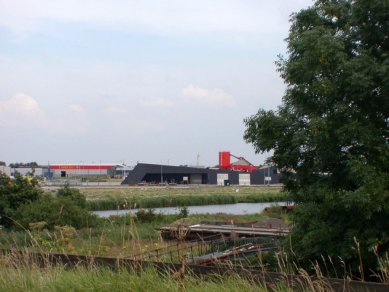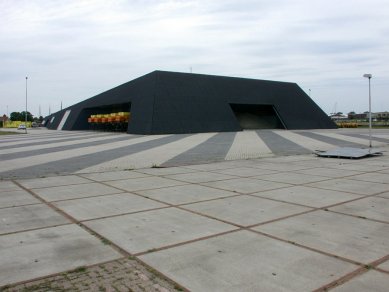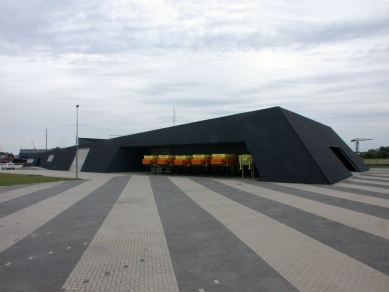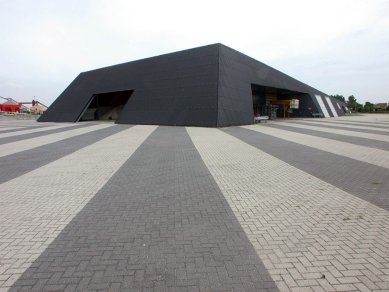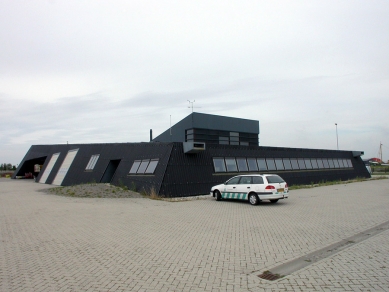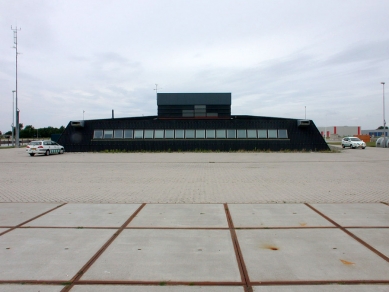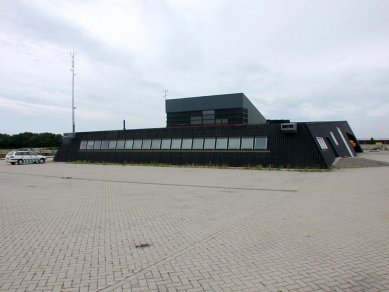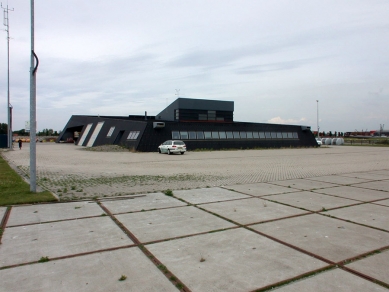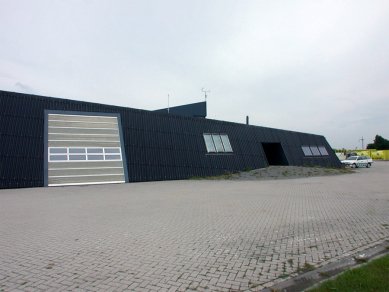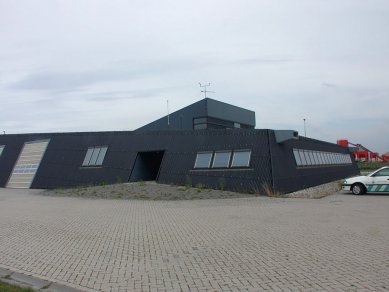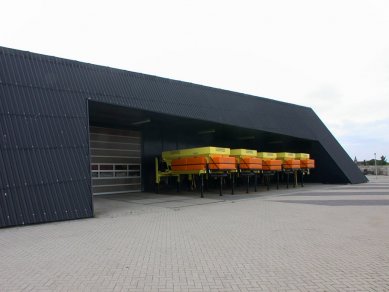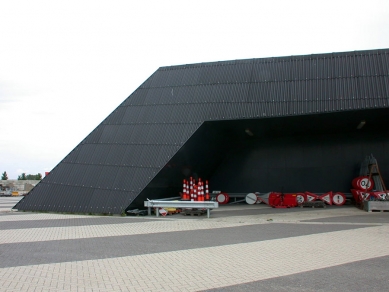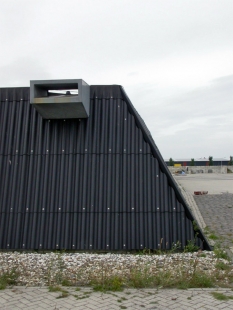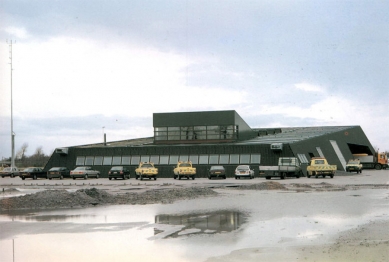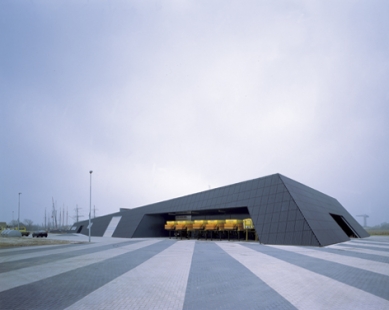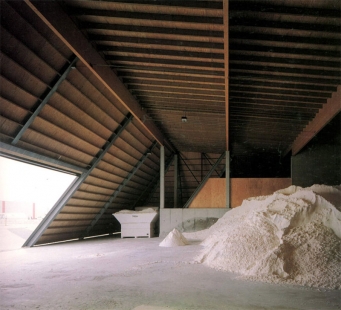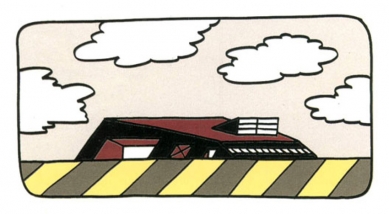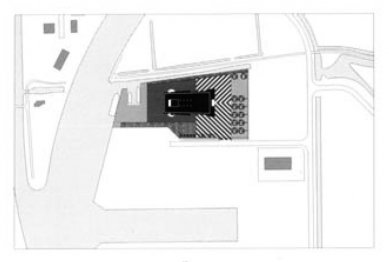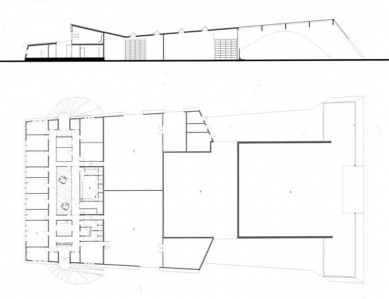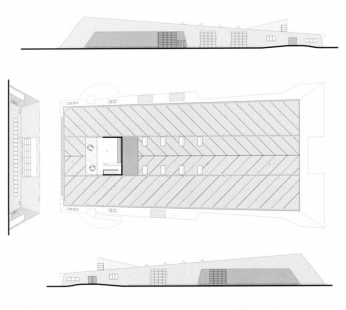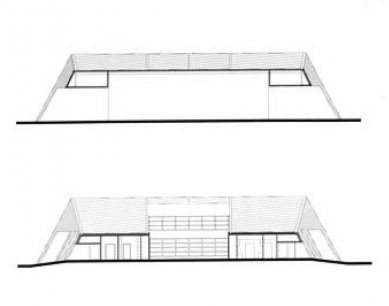
Regionální podpůrné dopravní centrum

Regional Support Center for the Dutch Roads and Waterworks Departments
The building can be regarded as a work station serving the Department of Roads and Waterways as a local base for the maintenance, inspection and measurement of roards and waterways. The nature of this programme is such that ninety per cent of the total area must by definition be located at ground floor level in order to be accessible for cars, trucks and cranes.
Programmatic differences are reflected in different ceiling heights and load/bearing structures> plenty of headroom and large spans for the workshops and hangars versus normal heights and spans for the offices.
The base is intended to be used by two quite distinct groups of workers: the 'wet' service group and the 'dry' service group. While each group is to occupy a clearly defined section of the project, the whole base benefit from the spacial programmatic advantages of the joint accommodation.
In the design, spaces with the same use and height are grouped together, regardless of whether to the wet or dry service group. The result is a striking, raked volume with a straightforward functional and architectural organization. The clustering serves to emphasize the communal nature of the combined service groups rather than stressing the separate sections.
The building has a cladding of undulating black panels. The panels are made of fibre-reinforced concrete plates. The fasteners of the panels are alignrd with the roof in order to emphasize the shape of the building.
The building can be regarded as a work station serving the Department of Roads and Waterways as a local base for the maintenance, inspection and measurement of roards and waterways. The nature of this programme is such that ninety per cent of the total area must by definition be located at ground floor level in order to be accessible for cars, trucks and cranes.
Programmatic differences are reflected in different ceiling heights and load/bearing structures> plenty of headroom and large spans for the workshops and hangars versus normal heights and spans for the offices.
The base is intended to be used by two quite distinct groups of workers: the 'wet' service group and the 'dry' service group. While each group is to occupy a clearly defined section of the project, the whole base benefit from the spacial programmatic advantages of the joint accommodation.
In the design, spaces with the same use and height are grouped together, regardless of whether to the wet or dry service group. The result is a striking, raked volume with a straightforward functional and architectural organization. The clustering serves to emphasize the communal nature of the combined service groups rather than stressing the separate sections.
The building has a cladding of undulating black panels. The panels are made of fibre-reinforced concrete plates. The fasteners of the panels are alignrd with the roof in order to emphasize the shape of the building.
El Croquis 94, Neuteling Riedijk 1992-99, p.180
0 komentářů
přidat komentář


